Starch added to milk. Gypsum mixed with butter. And carcinogenic paint in ice cream scoops. What else threatened our great-grandmothers with their daily shopping?
One of the most important Polish cooks of the twentieth century, Elżbieta Kiewnarska, in her lecture for the "Correspondence Course in Households", instructed Polish women about the importance of the ability to shop properly.
In her opinion, it was as important to any practical housewife as cooking and cleaning. Was she exaggerating? No way. Shopping in the Second Republic of Poland is not anything but culture and glitz. Come on - a murderous minefield. A whole lot of evidence in his latest book - "Twenty years from the kitchen. Culinary history of pre-war Poland ” - presents Aleksandra Zaprutko-Janicka. Below are some of the most disturbing examples.
Milk "straight from the cow"?
The easiest way was to cheat on milk, and it was simply impossible to detect the trick at first. The housewife believed she was buying "morning milk", which had barely cooled down after being squeezed out of the warm cow's udder; at most from the evening milking. In fact, it could be even two or three days old, that is, on the same day after being brought home, turn sour.
The buyers were robbed of the fat by putting the milk aside overnight and collecting the cream from it. They were diluted with water, the milk from which the cream had been previously harvested was mixed with the fresh, unchecked. When the vendor went overboard with the amount of water added, the mixture had to be thickened to make it look like the actual product. For this purpose, the dishonest used starch or potato starch mixed with water. To give the milk the appearance of greasy, the appropriate color (yellowish) was mixed with carrot juice or calendula decoction.
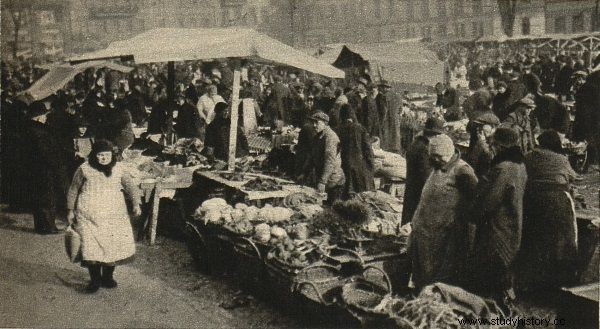
Stalls at Sapieżyński Square in Poznań.
Butter with gypsum and talcum powder
Butter was a bit more difficult to counterfeit. According to pre-war nutrition expert Alfons Bukowski, 85% of the fat and 15% of the ingredients come from whey, including water, are true. It has a characteristic color, being one of the shades of yellow (depending on the feed the cow ate). For a long time, it was even believed that this product could not be effectively fooled by customers because the trick would reveal premature rancidity or altered taste.
However, the scammers learned to counterfeit butter so many times that many of the housewives fell for their tricks. First of all, customers were pulled on by the weight of the product. Various substances were added to the butter to increase its weight and volume, mainly water, buttermilk, salt, flour, potato paste, and even talc and gypsum.
The color, as in the case of milk, was improved with the help of carrots or marigolds, but also safflower, saffron and even artificial paints. Other fats, including beef tallow and margarine, were used for "miraculous multiplication". The latter was invented in 1869 by Hippolyte Mège-Mouriès. This French chemist probably did not expect what a dizzying career the substance prepared by him would make. Its biggest advantage was the price - much lower than that of butter.
Even the flour wasn't safe
The most commonly used types of flour were wheat and rye. While today the gluten contained in them is sometimes censored, before the war, high-gluten varieties were valued. The author of the paper emphasized that the flour made of them should be white or white-yellowish, without any additional shades, without lumps, with a pleasant smell. If badly stored it smells musty, tastes mildew or bitter, and has dead insects in it (e.g. food moths at various stages of development).
Wheat flour, which was the most expensive, was adulterated by adding other types (oat, rye, buckwheat, potato, etc.) to it. Fraudsters increased the weight of the product, adding to it, for example, gypsum, bone meal or clay, but this did not happen in mills . This forgery was already occurring among small traders.
The increase in the volume of flour was revealed only in the finished bread or dough. If spoiled was used for baking, masking its proper condition with the help of chemical additives, the final product would deteriorate very quickly and you could feel hard lumps in it. Most of all, however, the baking… it just stank.
Poisonous delights
For example, ice cream, which was colored not with natural juices, but with artificial paints, was not safe from counterfeiting. The substance that was a color carrier (aniline) is classified as toxic and carcinogenic . Neither did the smell of sweetness come from nature.
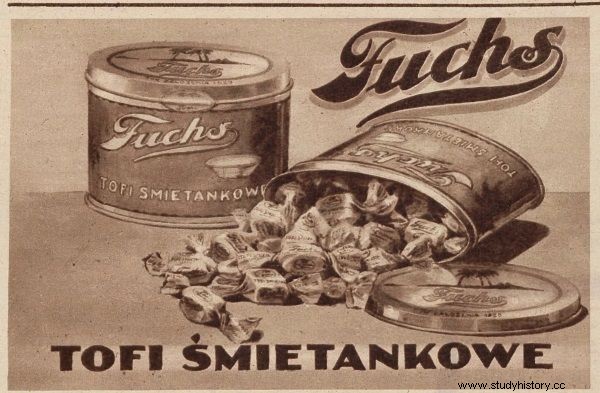
Even when buying a packet of caramels in the store, the customer could never be sure what exactly was added to them.
In order to increase its attractiveness in production, artificial aromas were used, not to mention the tragic sanitary conditions in which they were produced ... Most often, however, efforts were made to simply replace good-quality ingredients with inferior and cheaper ones, as mentioned by Alfons Bukowski:
Counterfeit confectionery such as cookies, gingerbread, marmalade, candy, syrups and ice cream consists mainly of adding saccharin or potato syrup instead of sugar and dyeing with aniline dyes, very often harmful to health and even poisonous mineral paints.
Lead-colored tea
Also, customers buying ordinary black tea, which would seem impossible to counterfeit, could be very surprised. As emphasized by Anna Trojanowska, an expert in the works of Alfons Bukowski, few goods were forged as often as tea. They were cheated at various stages. First, producers in Asia cheated, then middlemen in Europe, and finally small traders.
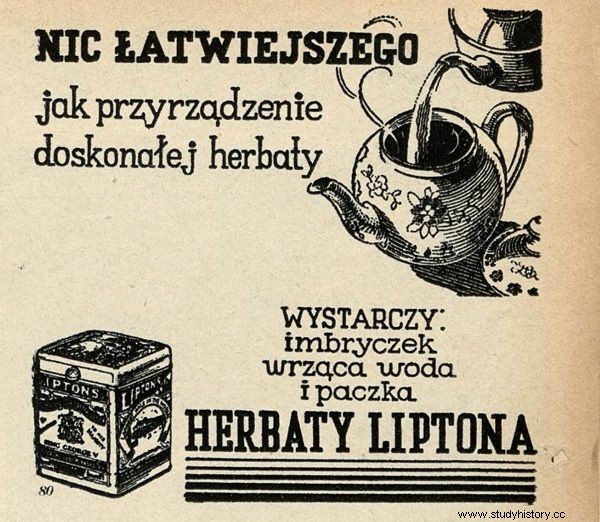
Tea leaves travel a long way between the tea bush and our teapot. Before the war, it was unfortunately a trail full of brazen cheaters.
For example, they mixed worse types of tea with better ones, or added dried leaves of other plants to the actual tea (including elderberry, black poplar, willow, licorice, rose, currant and even corn). The tricks of the fraudsters also included adding weight to the tea sold by weight, as well as selling the leaves that had been brewed several times and then dried to ignore them. The latter method could be dangerous to potential clients.
The tea, stripped of its taste and color and aroma, had to be prepared for sale by flavoring it and giving it the right color. Cunning people did not choose the means.
In addition to natural dyes, such as indigo or turmeric, packed poisonous paints into tea, including those based on lead . Since the leaves had been brewed several times, it was hard to expect them to still taste like real tea. And that was what the scammers were able to deal with.
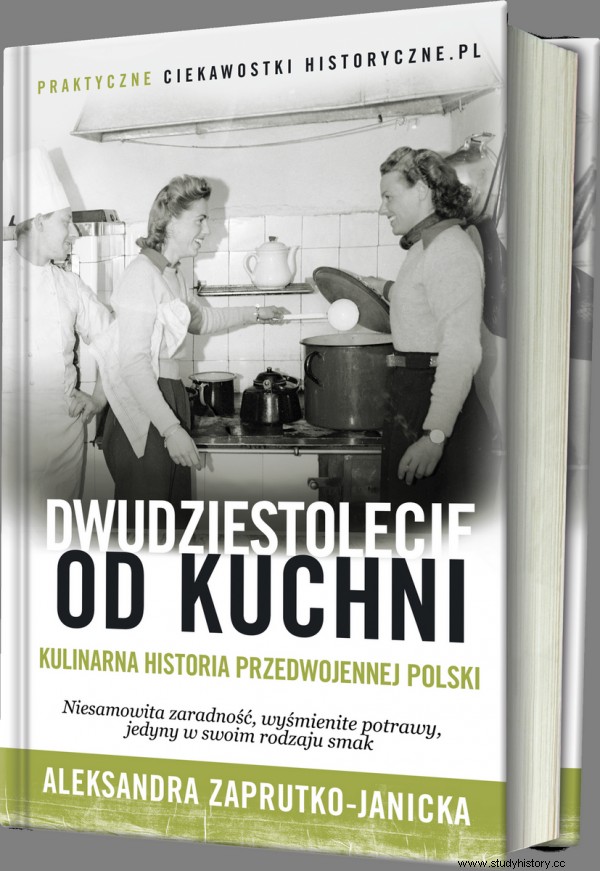
Incredible resourcefulness, delicious dishes, unique taste. Learn about the female history of pre-war Poland in the book "Twenty years from the kitchen" by Ola Zaprutko-Janicka.
The characteristic taste of tea comes from the tannins it contains. The slightly moistened leaves were sprinkled with campesh extract or catecha powder to give the infusion a "tight" feeling in the mouth so characteristic of this drink. Finally, the most disgusting practice - increasing weight. And no, it is not just about cheating on the price, but about what was used to weigh down the tea. Dishonest sellers poured iron and copper filings, sand, talcum powder, plaster, clay into it ...
Did your beef whine?
Before the war, beef was much more popular than today. Pork was considered too fatty, while mutton, lamb and veal were, unlike today, seasonal products. However, dishonest sellers tried to replace each of these types of meat with something much cheaper. And not necessarily appetizing.
A good housekeeper, for example, had to be able to tell the difference between bull meat and… horse meat. Horse meat was particularly easy to come across. The popular chronicler of working-class life, Stefan "Wiech" Wiechecki, included it among the products that were simply frequently forged. In one of the author's stories, the shopkeeper himself mentions what he is being accused of cheating: "the eggs were supposed to be stale, cream with flour, a real country pure horse sausage, and rotten cucumbers" .
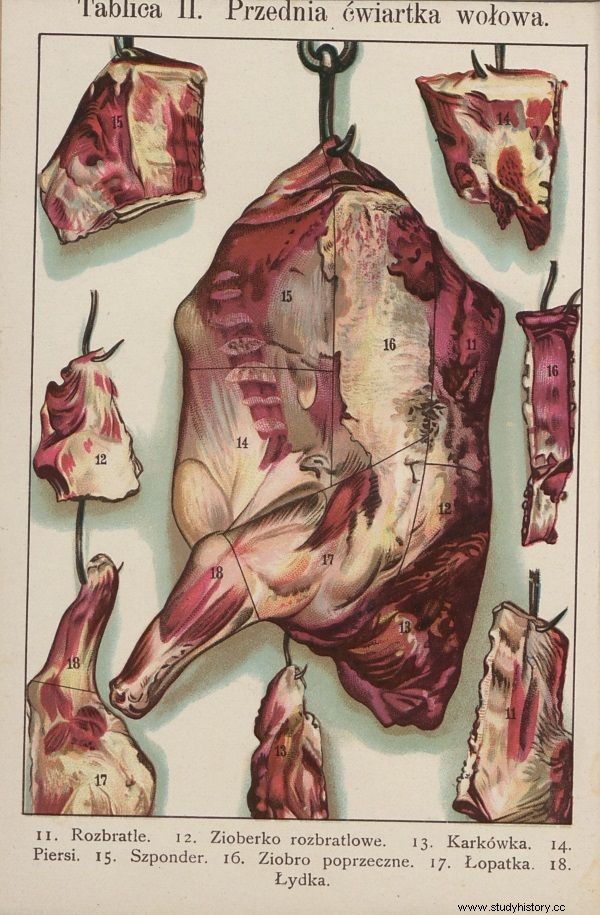
A quarter of a beef, which cost "like oxen", after careful analysis, could turn out to be a fragment of a horse tormented by a coachman.
Knowing the dirty tricks of traders, the housewife navigated the maze of these traps, providing herself and her family with good food at a reasonable price. Although decades have passed since the times of Kiewnarska, the true goal of buyers has basically not changed. Now only the methods of cheating consumers are different and instead of good quality products, we have in the package a whole series of ominous-sounding "E" with the addition of glucose-fructose syrup and hardened fats. Although the insolence of the pre-war crooks is still not a big deal ...
***
A country devastated by a war like the world has never seen before. Millions of families living in extreme poverty. Galloping prices, food counterfeiters, and fraudsters preying on human harm. Discover the face of independent Poland, stripped of lies and myths. The Second Republic was also a battlefield, and the new front turned out to be kitchens, pantries and city markets. To understand what our great-grandmothers faced every day, buy your own copy of the book:"Twenty years from the kitchen. Culinary history of pre-war Poland ”by Aleksandra Zaprutko-Janicka.
Bibliography:
The article is based on the sources and literature used by the author while working on the book "Twenty years from the kitchen. Culinary history of pre-war Poland ”. The author used, inter alia,:
- Bukowski Alfons, Counterfeit food products, Warsaw 1920.
- Gruszecka Marja, 366 lunches. Practical cookbook, Krakow 1930.
- Trojanowska Anna, Problems of food falsification in the publications of the Warsaw pharmacist Alfons Bukowski (1858-1921) [in:] "Kwartalnik Historii Nauki i Techniki", no. 3 (2014).
- Lectures by Elżbieta Kiewnarska as part of the "Household Correspondence Courses" issued by the "Bluszcz" Society.
